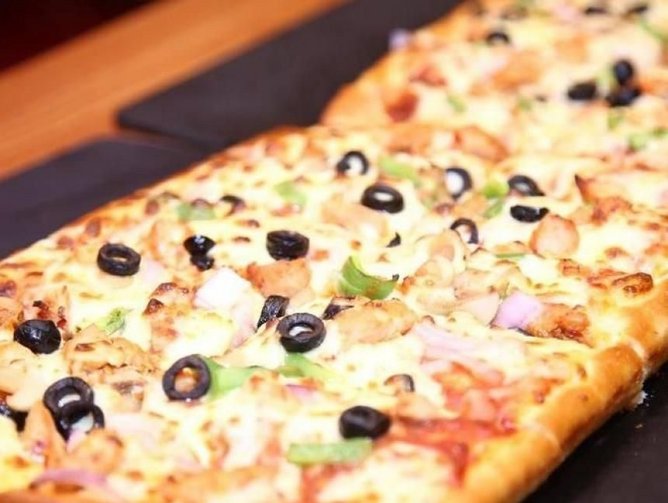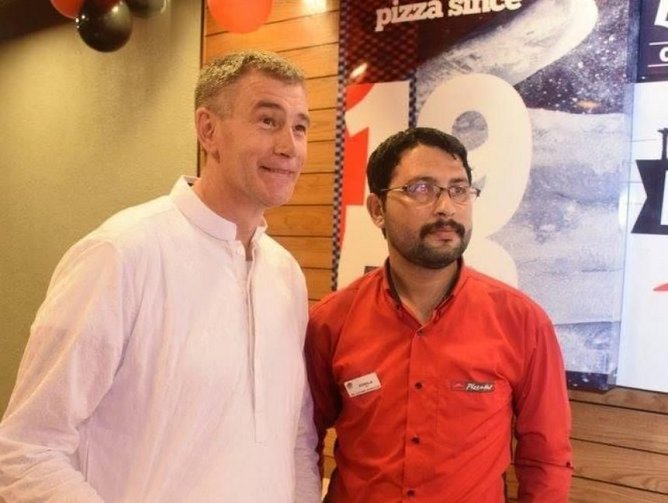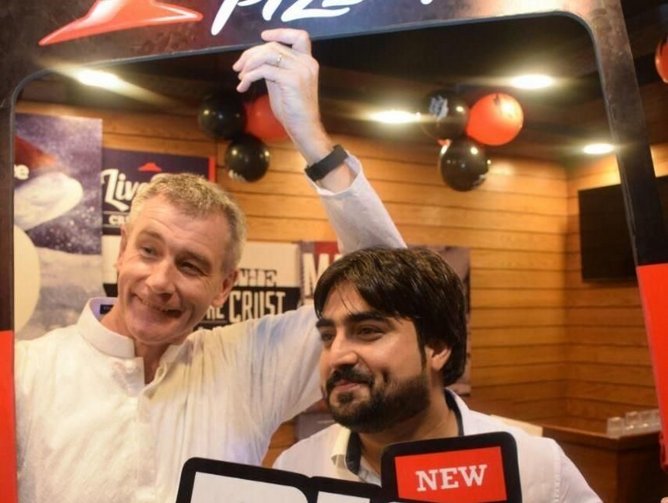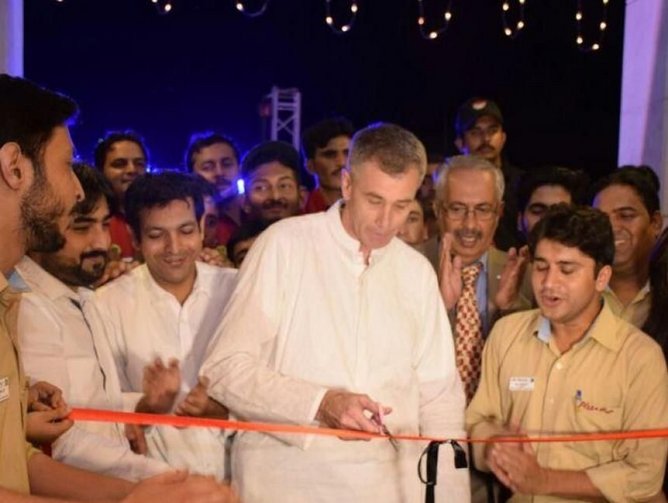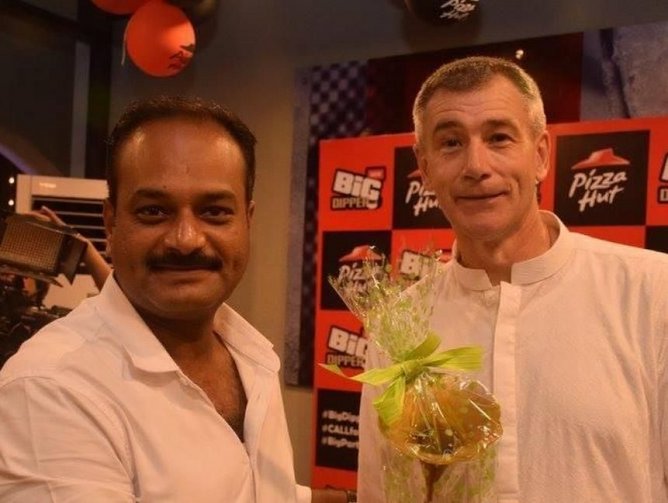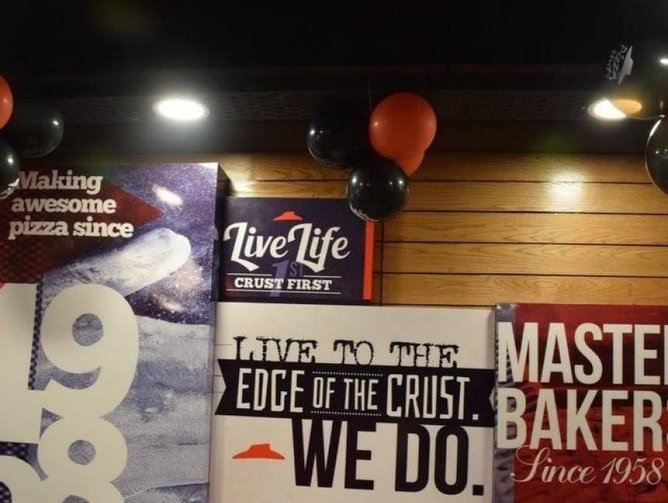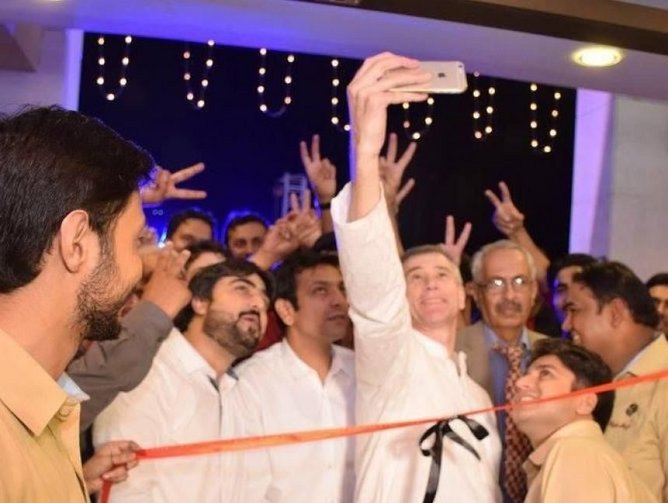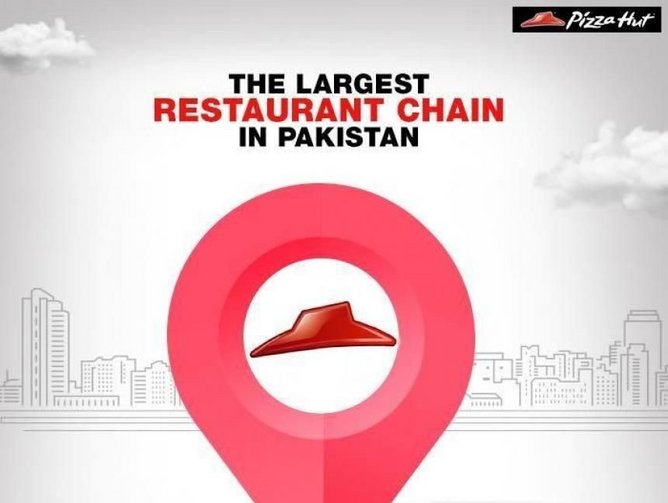From night-time cocktail bars in the UK to robot waiters in China, the Pizza Hut brand is making its mark all around the world. The most iconic international pizza brand has become a household name for millions of people, and 2017 marks 25 years since arriving in Pakistan.
Now firmly established in the country, the past year in particular has heralded substantial growth and regeneration, with the year ahead showing no sign of losing that momentum. Enter Tony Ozanne, Chief Operating Officer (COO) at Pizza Hut Pakistan, owned by MCR Pvt. Ltd. and under the Yum! umbrella of food brands.
Tasked with making sure the company stays clear of increasing local competitors and continues to offer relevance and quality to customers, Ozanne’s remit can be condensed into the hashtag #mlfg – the global Pizza Hut ambition to become the most-loved, fastest growing food brand. Despite being able to build on 25 years of heritage, the Australian COO arrived with timely added urgency in January 2016.
“Pizza Hut has gone through two franchise terms and is the first international brand in Pakistan, so over the years it may have rested on its laurels a little,” he explains. “Competition has come to the market so we’re getting things up to speed. Our existing assets are a massive opportunity and Yum! has also tasked us with a fairly aggressive expansion plan regarding new stores as well. This has been my focus for the last 12-14 months, at the same time focussing on enhancing the operations and staff standards whilst building a culture of recognition.”
Seemingly destined for primary school teaching, Ozanne decided to pursue a career in the food industry instead, with another of Yum!’s brands the springboard to where he is today. “I started when I was 15 as a casual cook at KFC in Australia when I was going through school and university. I graduated as a primary teacher but never taught because I got offered an assistant manager job at KFC. I worked my way up with KFC and ended up in Dubai in 2002 working with Yum! This is where I first came into contact with Pizza Hut in the Pakistan market as I was working alongside the franchisor.”
Landmark
Though acknowledging that there is much more to come from Pizza Hut in Pakistan, a 25-year birthday celebration is not to be taken lightly. Indeed, Ozanne outlines plans to make the most of the landmark anniversary.
“Our International President Milind Pant is coming over to mark the occasion,” he says, “and we’re also planning year-long activities such as special promotions and messaging. This is a great chance to celebrate our heritage and refresh interest in Pizza Hut at the same time.”
The year leading up to this point has witnessed some other important milestones. Not only is Pizza Hut the longest-standing international food brand in Pakistan, it is also the largest with 72 stores, 16 of which being new additions built in 2016.
Momentum
Such growth is set to continue this year. Ozanne reveals that 13 stores will be opened with another 11 refurbished, while 2018 will see another 14 new stores, taking the total up to 99. “We may sneak another one in there to hit the 100 mark,” he quips.
By the end of 2018, almost all of the company’s restaurant estate will either be new or refurbished, fitted with enhanced décor and modernised features for staff and customers. The size of stores is also shifting to meet modern consumer demand.
“Traditionally Pizza Hut has been a destination restaurant with massive assets sometimes two, three, even four storeys high, capable of seating hundreds of people,” says Ozanne. “But times have changed and now dining in is sitting alongside delivery and takeaway, so we’re reducing the size of new assets to accommodate this. We’re looking at anywhere from 40-80 seats as opposed to hundreds.”
New sizes, structures and operating models brings with it the opportunity to explore new concepts for sites as well. Ozanne refers to a ‘super delco’ which is a delivery and takeaway outlet that still has seating and table service, something which he pointed out as important to maintain. Indeed, there are only a very small number of delivery/takeaway only units, Karachi being the city where this has seen the most success.
Other concept ideas recently discussed with Yum! include motorway sites and units made from non-traditional materials such as shipping containers. Joint ventures with entertainment venues such as cinemas are also being considered.
New places, new people
While the big cities such as Karachi, Lahore and Islamabad are important focal points where Pizza Hut is most established as a brand, it is the smaller cities that hold the most potential for growth. “These may be places with two or three million people but who have never seen an international food brand before,” Ozanne adds. “They will be familiar with pizza of course, but Pizza Hut will be totally new to them. This creates a set of new challenges from supply chain and logistics through to marketing and education of our brand.”
Around half of the 13 new store locations for 2017 have been decided. It is a challenging process which involves careful consideration of an array of factors, from supplier networks and energy supplies to footfall and scope of local competition.
One might believe that recruitment poses another challenge when opening a new store. However, for Pizza Hut in Pakistan, the opposite has been the case.
Ozanne explains: “The recruitment side isn’t actually a big challenge for us, and being part of a big group with Yum! is a big benefit in terms of training provision. If we put an ad out locally and say we are recruiting, there are lines down the street of people wanting to apply, so we have the luxury of being able to filter out the best candidates. We have international brand appeal, so getting people to join us is not an issue.”
The international brand appeal of Pizza Hut can in fact present a retention challenge in some instances, for ambitious local competitors may be willing to prize away employees. However, the development of new stores and resultant recruitment drives carries with it a positive message to the new communities Pizza Hut is arriving in. “We also hire a lot more staff per store here than we do in other locations such as Australia,” Ozanne adds. “We can have anywhere up to 20-30 people working in a store at any one time, with 15 riders waiting on deliveries.”
Brand of choice
Asides expanding Pizza Hut’s physical presence, Ozanne is seeking to add more relevance to the brand and bring pizza to a larger number of Pakistani consumers.
One of the major ways of doing this, and something backed up by extensive consumer research, is developing a value offering that is more affordable to working locals.
“Other Quick Service Restaurants (QSR’s) have had a lot of success with this and it has opened up a new layer of customers with cheaper offerings,” Ozanne comments. “The challenge of price is one where we are constantly seeking to develop offerings of value, creating bundles and deals which focus on quality full meals for the family and allow us to compete more with the traditional QSR’s on a per head price basis.”
However, for Ozanne, the key to making this work for Pizza Hut is to successfully cater for local tastes. “We’re seeing how we can reinvigorate products to an entry level so we can get people sampling what we have to offer,” he continues, pointing out that almost 80 percent of pizza sales come from just four topping choices which all appeal to the localised palette: Chicken Fajita, Chicken Supreme, Chicken Tikka and Fajita Sicilian. Pizza Hut has hit a sweet spot with spicy chicken flavours in particular, unique to Pakistan’s restaurants and something which can be exploited further.
Another means of adding relevance to consumers and bringing more people in contact with the brand is through technology, particularly digital services. “Our online business is growing all the time and there are still opportunities for us to enhance the offering on the website,” says Ozanne. “Upwards of 10 percent of orders are now coming via the website and this trend is continuing to grow.” Pizza Hut Pakistan is also working on an iOS version of its app, having successfully released an Android version.
Technology behind the scenes can help improve the customer experience, too. Ozanne and his team will be looking at bringing systems up to date, for instance reporting and integration of manual processes. A specific area this could enhance is the processing of online orders, which is currently delivered manually through call centres rather than being automatically sent to the appropriate restaurant kitchen. Rollout of free Wi-Fi and even introduction of charging stations for devices are among other considerations.
This will all aid in the battle to compete with local competitors, especially the copycat challengers who adopt very similar concepts and appearances. With legal protection of copyright not the same as it is in other markets such as the UK, Pizza Hut has little choice but to differentiate itself through quality and appeals to its rich heritage.
“We have to take some of these local competitors seriously as some of them are growing quickly and are up to the 20s in terms of store count,” adds Ozanne. “Some of them have very similar branding and logos to Pizza Hut, and this is also a problem for the likes of KFC and McDonald’s. It is our job to make people aware that we are the original Pizza Hut with the 25 year-legacy and our standards have to reflect that as well.”
Another 25 years
What will Pizza Hut Pakistan look like in another 25 years’ time? While Ozanne confirms that robot waiters may not be an immediate priority as they are in China, he does see tremendous opportunity to maximise the brand’s reach.
But how much Pizza Hut can the Pakistani market accommodate? “Perhaps 150-200 standalone restaurants is a stretch, simply because of the market’s ability to absorb that many Pizza Huts.” The company is already based in 24 cities across Pakistan and evaluating many outstation locations, which have to be proven viable. “There may be 180 million people living in Pakistan but the number of people that can buy pizza is far less than this, especially considering the rural populations of the country,” Ozanne adds.
Nonetheless, the scope for different style setups is a lot larger, as Ozanne concludes: “I think if we start looking at non-traditional stores then this number could look more like 300-400. Kiosks and partnerships with other venues would be key for this to happen. Pizza Hut was especially iconic 10-15 years’ ago, and now we are a generation further down the line so people are growing up with Pizza Hut being familiar to them. There is a great opportunity to build on this heritage.”
